How to identify AI-generated text: with or without software
Find out how to recognize content created by AI, even if you don't have specialized software.
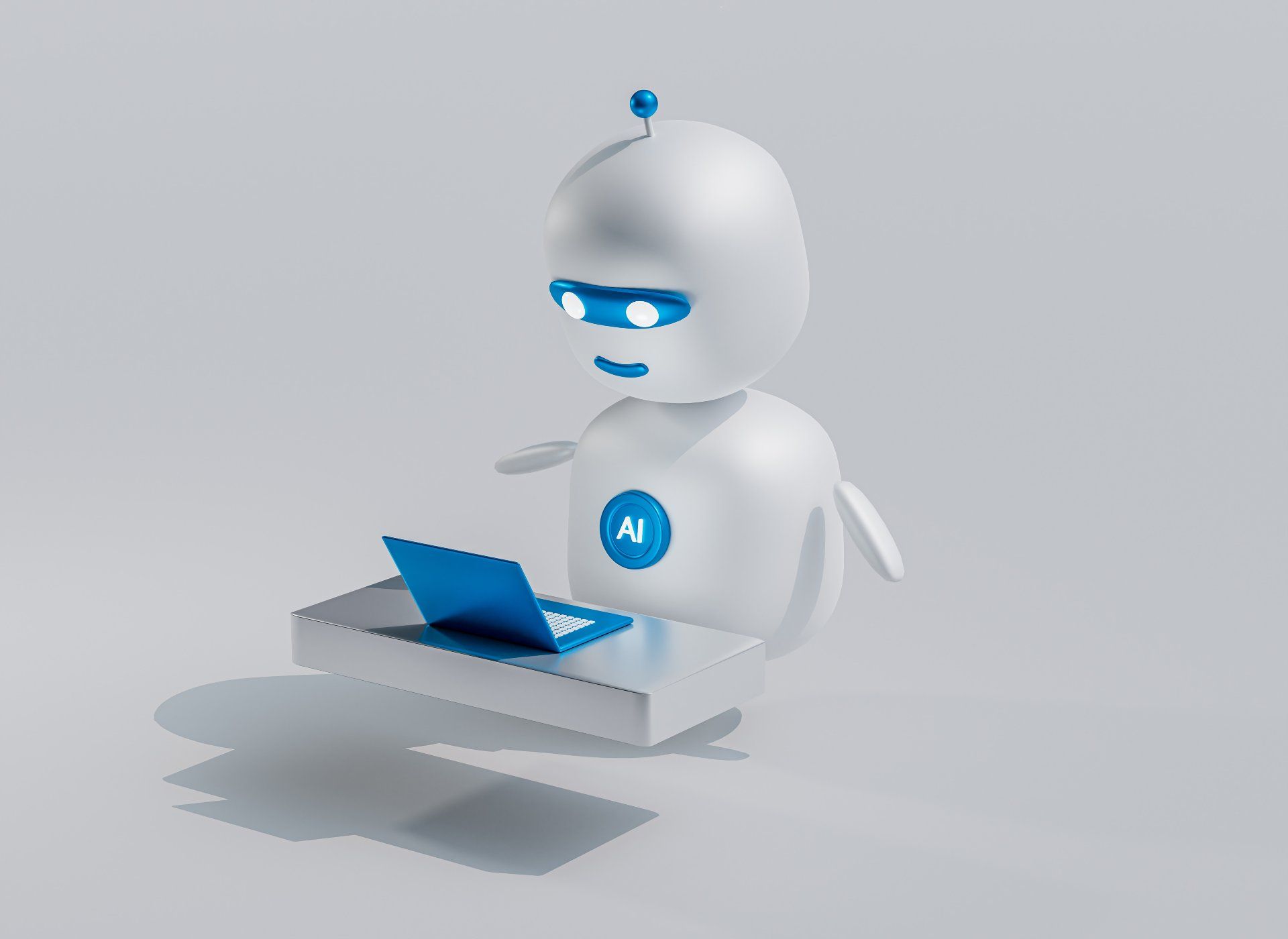
The influence of AI in diverse fields such as journalism, storytelling, and marketing is undeniable. Despite the ongoing debate about its ethical implications, AI's role in content creation is significant. However, AI-generated content may pose challenges that could affect brand integrity.
In this article, the term "AI-generated text" applies to content produced exclusively by AI writing tools like ChatGPT. Such text emerges without human intervention throughout its creation. The lack of human oversight may pose challenges, particularly when search engines index this content.
Risks of AI-generated content for brands
Large language models such as ChatGPT frequently encounter challenges in verifying the accuracy of the information they generate. This raises the possibility of circulating incorrect or misleading material.
Additionally, these AI tools do not update in real-time to align with current legal frameworks, creating potential risks in areas like copyright, trademark, or defamation. Recognizing AI-generated content can help reduce these risks and strengthen a brand's credibility and reputation.
How to detect AI-generated text?
There are multiple ways to determine whether text is AI-generated. These can be categorized into two main approaches: manual identification and software-based identification.
Manual identification methods
Research suggests that although no foolproof method exists to identify AI-generated text, specific characteristics often appear in such content.
1. Sentence patterns
According to Daphne Ippolito, a senior research scientist at Google Brain, AI-generated text frequently exhibits unique punctuation patterns.
This can manifest as an overuse of common words such as 'the,' 'it,' or 'is,' rather than more specific terminology. These idiosyncrasies arise from the AI's predictive text algorithms.
In contrast, text fully crafted by humans usually showcases a wider range of phrases and sentences, incorporating diverse styles and even slang. As a result, typos may appear.
"A typo in the text is actually a really good indicator that it was human-written," Ippolito notes.
Another characteristic to consider is the repetition of words and phrases. While ChatGPT-4 is designed to be more creative, content generated by earlier models often reuses the same keywords and topics with little diversity.
2. Identifying outdated information
Besides analyzing sentence patterns, examining the timeline of the information can be informative.
As of 2023, ChatGPT's database includes data up to September 2021. Therefore, the tool generates content based on information available until that point. If an article depends exclusively on information from before this date, it suggests the content may be AI-generated.
Such constraints also affect the depth of an article. Because it cannot access data after September 2021, AI-generated content may lack detailed insights into a subject.
Identifying these traits can assist in determining whether an article is fully or partially created by AI. Various researchers and developers have also created tools for detecting AI-generated text, generally based on these guidelines.
Software tools for detecting AI-generated text
Is there a definitive way to identify AI-generated text using software tools? The answer is nuanced. As it stands, no tool can unequivocally differentiate between text produced by humans and that generated by AI. Yet, the patterns discussed previously can aid in quicker identification.
A number of websites offer daily free trials for detecting text from ChatGPT and other GPT versions. These in-browser tools have been reviewed by credible digital marketing outlets. Some have received positive evaluations for their ability to identify AI-generated material, while others have not been as successful.
To evaluate these tools, we subjected an article created by ChatGPT-4 to analysis. The article was generated with the prompt 'generate a 300-word article about content marketing.' The results are as follows.
1. ZeroGPT
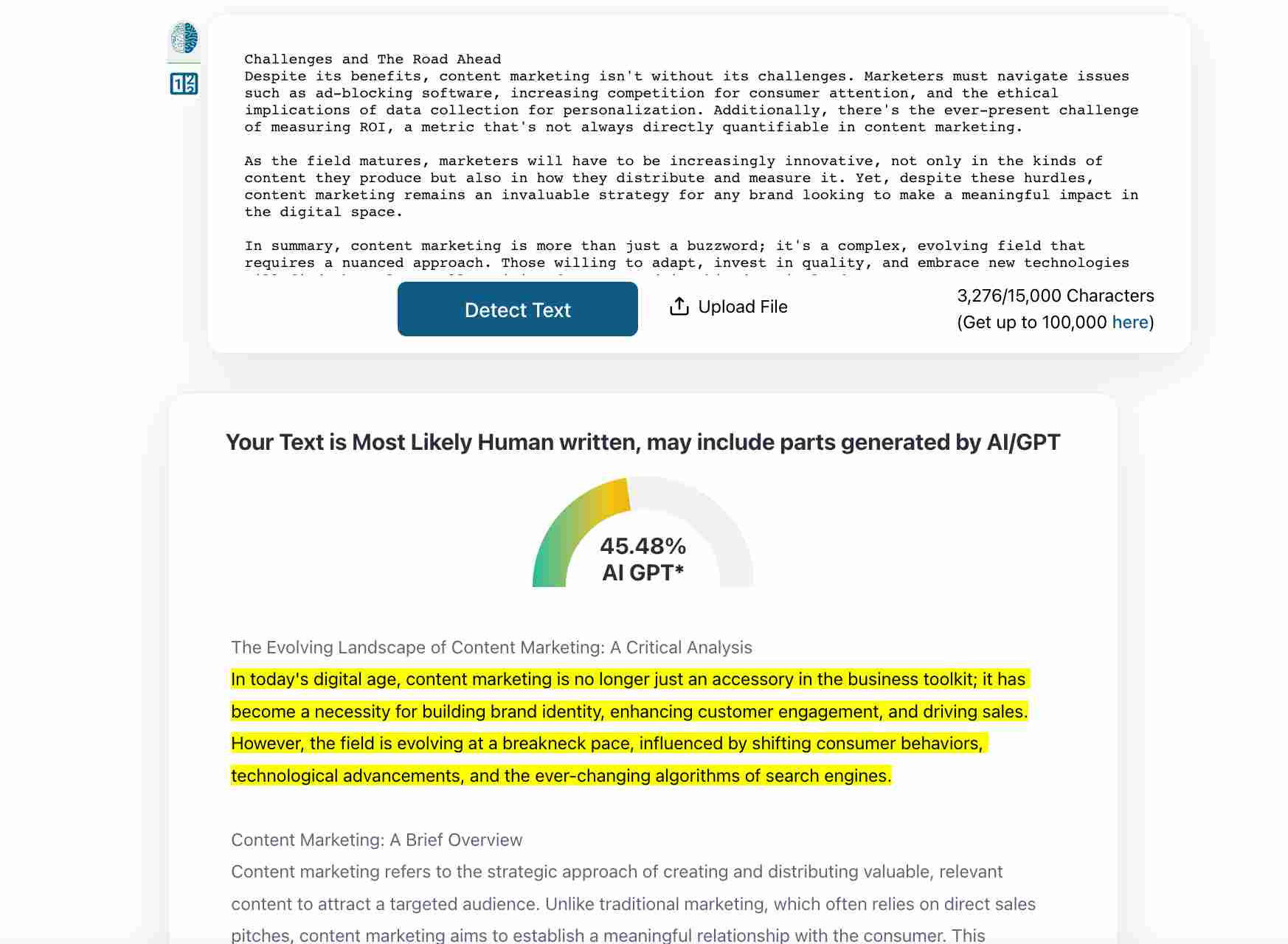
Founded by Edward Tian, ZeroGPT aims to identify text generated by ChatGPT and similar AI writing platforms.
The tool is accessible via its website, where users can input text for analysis. ZeroGPT offers free analysis for up to 15,000 characters; a $8.49 fee covers up to 100,000 characters.
In our test, ZeroGPT identified a 45.48% likelihood that our sample was AI-generated. HubSpot and Search Engine Journal have also recommended the tool, reporting identification rates as high as 88.57%.
2. Writer’s AI content detector
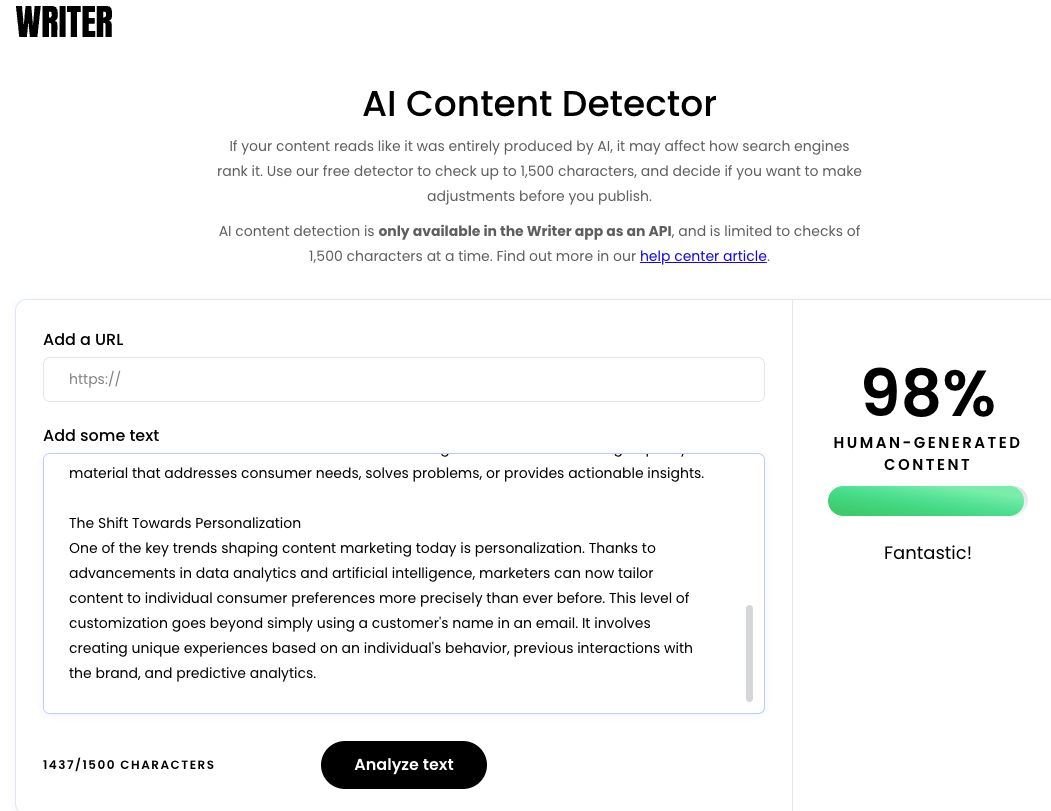
Initially a writing assistant, Writer has expanded its services to include an AI content detector. Accessible through its website, the tool offers a column for text input as well as a feature for URL-based content detection. The free version limits character input to 1,500.
In our testing, Writer failed to identify our ChatGPT-4 generated sample as AI-produced. Search Engine Journal's tests yielded similar results, successfully identifying only one of three AI-generated prompts as such.
3. Hive Moderation AI content detector
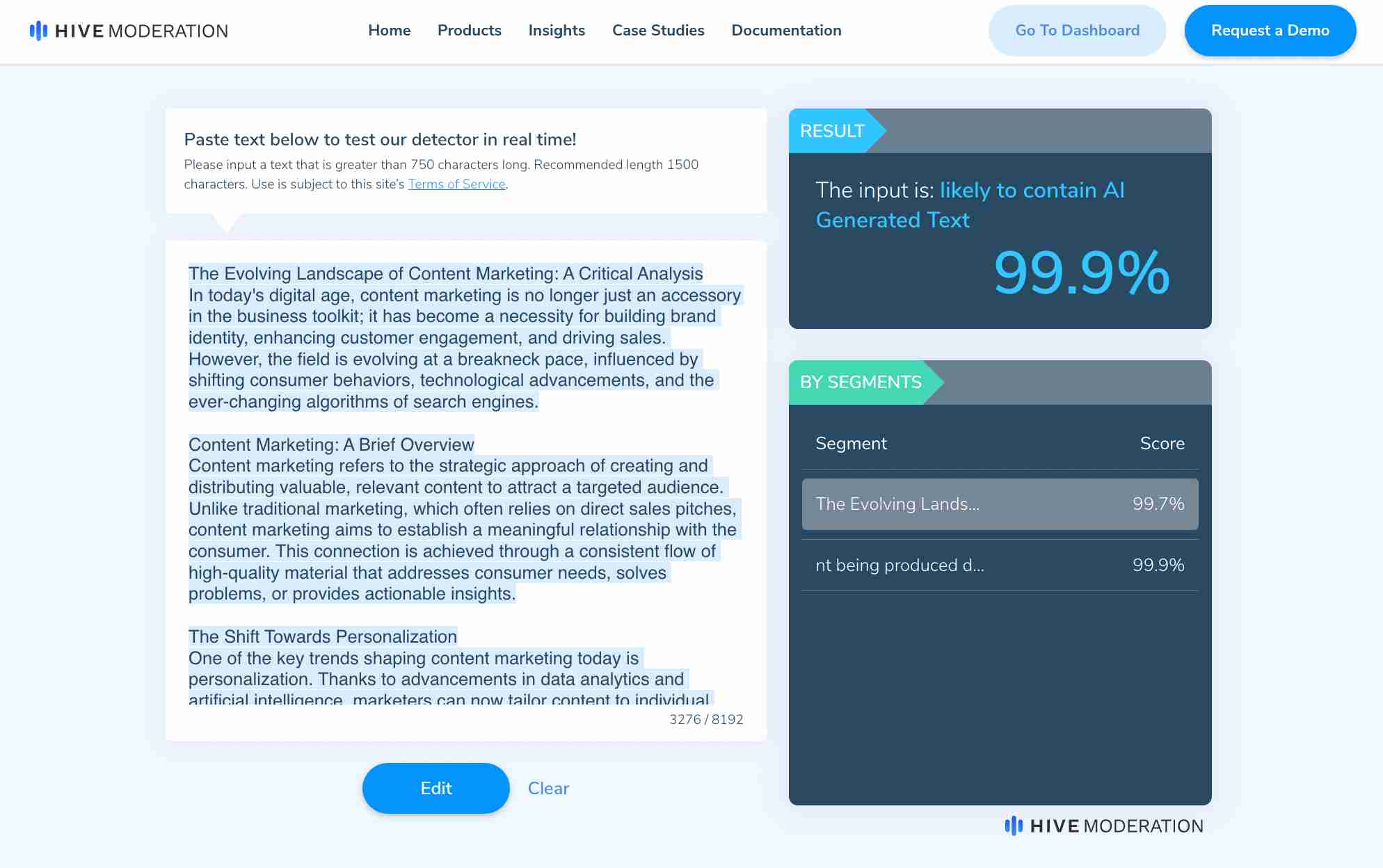
Originally focused on content moderation, Hive Moderation also offers a feature for detecting AI-generated content, applicable to both text and images.
The tool is available as a Chrome extension and offers a free demo on its website for up to 8,192 characters. In tests, the tool identified a likelihood of 99.9% that a sample text was generated by AI.
4. Content at Scale AI content detector
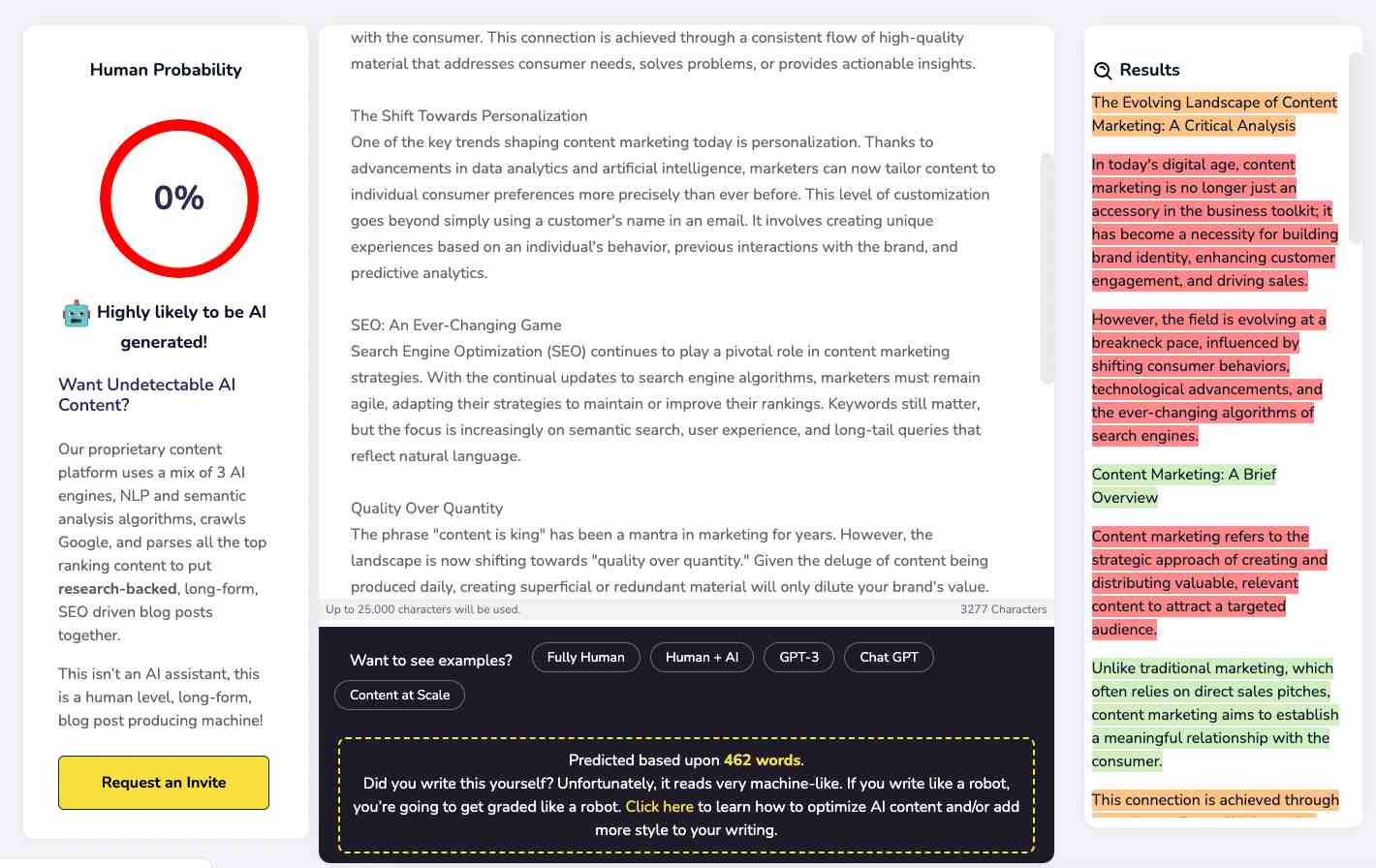
Known for providing AI writing support, Content at Scale has added an AI-generated content detector to its offerings. The tool is directly accessible through the website and does not require downloading.
In our tests, the tool said there was a 0% chance the text from ChatGPT-4 was written by a human. On the other hand, when it looked at a piece about the value of human input in writing, it said there was a 100% chance it was human-written. The tool also marked areas that might have had help from AI or a human.

At the end of the day, human involvement remains vital in crafting content
While a variety of tools and guidelines are available for discerning AI-generated text, the technology continues to advance in its ability to imitate human-like writing. Even Google indicates that it is unlikely to penalize such content as long as it doesn't constitute plagiarism or duplication.
Nonetheless, the existing limitations of AI—such as its reliance on outdated data and its lack of nuanced understanding—underscore the indispensable role of human input. Ultimately, if the objective is to produce content that truly engages human readers, human creativity and insight are essential.
Save time and money when producing high-quality bespoke content for your markets. ContentGrow helps marketing teams work with perfectly matched content creators at preferred rates. Sign up to get your campaign started or book a quick call with our team to learn more.




